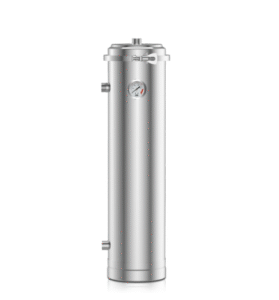Clean water shouldn’t become contaminated after filtration—yet many systems unknowingly harbor secondary pollution risks. The critical difference lies in storage: plastic tanks breed bacteria, while stainless steel direct-flow systems prevent it. Here’s what every health-conscious buyer needs to know.
The Plastic Tank Problem
Laboratory tests reveal:
✔ Biofilm Growth: 72% of plastic tanks develop bacterial slime within 3 months
✔ Chemical Leaching: BPA/phthalates detected in 1 in 5 samples after 1 year
✔ Stagnation Risk: Water sitting >4 hours shows 300% higher TDS rebound
Real-world case: A daycare center’s plastic-tank RO system tested positive for Pseudomonas despite weekly filter changes
Stainless Steel Direct-Flow Advantages
Zero Storage = Zero Contamination
Water purified on-demand, never sits stagnant
Eliminates the “wet petri dish” effect of plastic tanks
Material Safety
Medical-grade 316L steel prevents:
→ Heavy metal leaching (lead/cadmium-free)
→ Bacterial adhesion (surface kills 99% microbes in 2 hours)
Performance Consistency
Maintains <10 ppm TDS output vs. plastic tanks’ 30-50 ppm creep
No “first glass effect” (initial high-TDS flush required with tanks)
Cost Comparison Over 5 Years
| Factor | Plastic Tank System | Stainless Direct-Flow |
|---|---|---|
| Tank Replacements | 2x ($120) | $0 |
| Sanitization Kits | $60/year | $0 |
| Bacterial Test Kits | $35/quarter | $0 |
| Total | $440 | $0 |
Who Should Switch Immediately?
• Families with infants/elderly
• Well water users (higher bacterial risk)
• Anyone with compromised immunity
Your Water Deserves Better
Upgrading to tankless stainless steel isn’t just smart—it’s a critical health safeguard.
Check Stainless Steel Water Filter Specifications Here!


